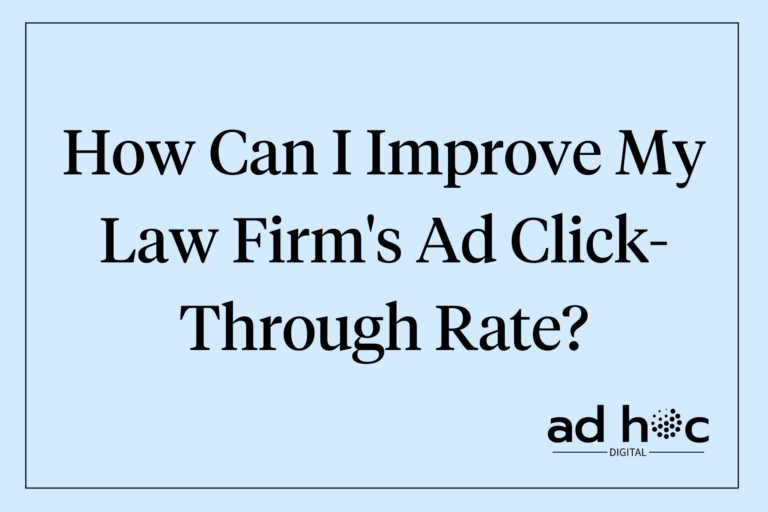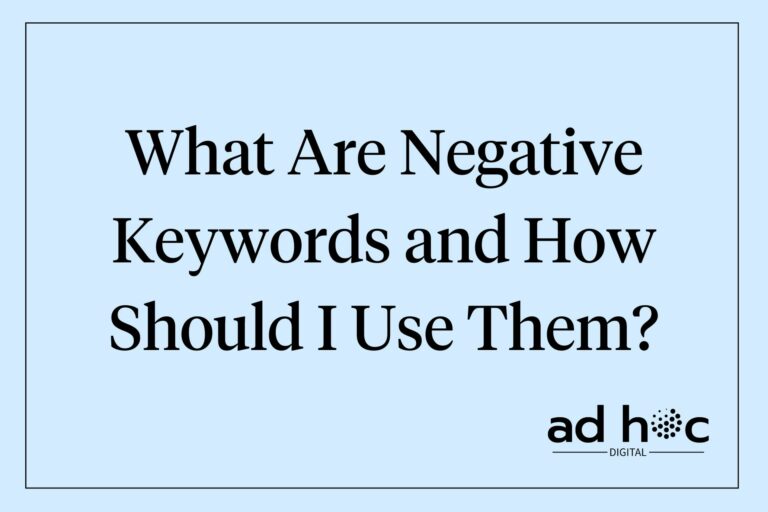Remarketing is a powerful digital marketing strategy that helps keep your law firm top-of-mind with potential clients who have previously visited your website. By targeting these past visitors with customized ads, you can significantly increase your chances of converting them into clients. This detailed guide will teach you everything you need to know about remarketing for law firms by explaining what it is, how it works, and the benefits it can offer your firm.
For a deeper understanding of creating successful campaigns, explore our guide on effective Google Ads campaigns tailored for lawyers.
Understanding Remarketing for Law Firms
Definition
Remarketing is a digital marketing technique that targets users who have previously visited your website or engaged with your content. By using cookies or tracking pixels, you can serve tailored ads to these users as they browse other websites or use social media.
How It Works
The remarketing process involves several steps:
- Setting Up Remarketing Tags: Adding tracking codes (tags) to your website to collect data on visitors.
- Creating Remarketing Lists: Segmenting visitors based on their behavior, such as pages visited or actions taken.
- Serving Tailored Ads: Displaying customized ads to users based on their previous interactions with your site.
Types of Remarketing for Law Firms
- Standard Remarketing: Displays ads to past visitors of your law firm’s website as they browse other websites in the Google Display Network. This helps keep your services top of mind and encourages them to return to your site.
- Dynamic Remarketing: Shows ads featuring specific legal services or content that users viewed on your site. For example, if a visitor looked at your family law services, they would see ads related to family law as they continue to browse online.
- Remarketing Lists for Search Ads (RLSA): Targets past visitors of your law firm’s website when they search on Google using your selected keywords. This ensures your ads appear to users who have already shown interest in your legal services.
- Video Remarketing: Targets users who have interacted with your law firm’s YouTube videos or channel. This can be particularly effective if you have educational or promotional videos about your legal services.
- Email Remarketing: Sends targeted ads to users who have engaged with your email campaigns. For instance, if someone opened your newsletter about estate planning, they might see related ads as they browse the web.
Benefits of Remarketing for Law Firms
Increased Brand Awareness
Remarketing helps keep your law firm in the minds of potential clients by displaying your ads to them repeatedly. When someone visits your website but doesn’t take immediate action, they may forget about your firm and your services. After all there are so many factors fighting for our attention at all times that you can’t really blame them.
Remarketing ensures that your ads follow these visitors around the web, reinforcing your brand presence and making it more likely that they will remember your firm when they need legal assistance. Essentially we like to call these the online billboards. This increased exposure can lead to higher brand recognition and recall, which is crucial in competitive markets.
Higher Conversion Rates
By targeting users who have already shown interest in your services, remarketing significantly increases the likelihood of conversion. These users have already visited your website and demonstrated some level of interest, making them warmer leads compared to first-time visitors. When they see your ads again, they are reminded of their initial interest, which can nudge them towards making a decision.
Studies show that users who are remarketed to are 70% more likely to engage with ads and convert, whether that means filling out a contact form, calling your office, or scheduling a consultation.
Cost-Effectiveness
Remarketing can be a cost-effective way to maximize your advertising budget. Since you are targeting users who are already familiar with your brand, the cost per click (CPC) and cost per conversion are usually lower compared to standard display advertising. This is because these users are more likely to click on your ads and take action, reducing the number of wasted impressions. Additionally, remarketing allows you to get more value out of your existing traffic by re-engaging users who didn’t convert on their first visit, stretching your marketing dollars further.
Targeted Advertising
Remarketing allows you to create highly targeted ads based on user behavior. For example, if a visitor landed on your page about personal injury law but didn’t convert, you can show them ads specifically related to personal injury services. This level of customization ensures that your messaging is relevant to the user’s interests or concerns, making your ads more effective. You can also use remarketing to target different segments of your audience with tailored messages, such as offering a free consultation for visitors who spent a significant amount of time on your site or providing educational content for those who visited your blog.
Imagine if the billboards you see while driving could change based on your recent activities. For example, you walk into a furniture store looking for a mattress, and suddenly all the billboards you pass start advertising mattresses on sale. Sounds a bit scary, right? But it works really well.
By leveraging these benefits, law firms can enhance their marketing efforts, achieve better results from their advertising spend, and ultimately attract more clients. For more on the benefits of Google Ads, see Google Ads benefits for law firms.
Setting Up a Remarketing Campaign
Creating Remarketing Lists
Identify and Segment Your Audience
- Website Visitors: Segment users based on specific pages they visited. For example, create a list for users who visited your “Contact Us” page but didn’t submit a form.
- Form Completers: Create a segment for users who filled out a form but did not convert into clients.
- Time Spent on Site: Identify users who spent a significant amount of time on your site, indicating interest.
Steps to Create Remarketing Lists:
- Log into Google Ads:
- Go to the “Tools” menu, then click on “Shared Library” and “Audience Manager”
- Create a New Audience List:
- Choose the type of audience you want to create (e.g., website visitors).
- Define Audience Criteria:
- Set the rules for your audience, such as specific URLs visited or actions taken on your site.
- Set Membership Duration:
- Decide how long users stay on your list. Typical durations range from 30 to 540 days depending on your campaign goals.
Setting Up Tags
Add Remarketing Tags to Your Website
- Google Tag Manager (GTM):
- Log into GTM and create a new tag.
- Choose “Google Ads Remarketing” as the tag type.
- Enter your conversion ID from Google Ads.
- Set triggers to fire the tag on relevant pages (e.g., all pages for general visitors or specific pages for targeted lists).
- Publish the container to activate the tag.
- Directly in Google Ads:
- Navigate to the “Audience Manager” and select “Tag setup.”
- Choose to install the tag yourself or email instructions to a webmaster.
- Add the global site tag to every page of your website.
- Optionally, add event snippets to track specific actions (e.g., form submissions).
Steps to Set Up Tags:
- Obtain the Remarketing Tag Code:
- Available in your Google Ads account under “Audience Sources.”
- Add the Code to Your Website:
- Insert the global site tag in the header of your website.
- Use event snippets to track specific actions for more detailed remarketing lists.
Creating Targeted Ads
Crafting Effective Ads:
- Headlines: Use attention-grabbing headlines that address the user’s initial interest.
- Ad Copy: Write persuasive copy that speaks directly to the user’s needs or concerns.
- Call to Action (CTA): Use strong CTAs like “Get Your Free Consultation” or “Claim Your Discount Today.”
- Visuals: Include relevant and appealing images or videos to draw attention. To learn more about this visit our guide on Google Display Ads for lawyers.
For a comprehensive guide on the first three steps, visit our guide on effective Google Ads copy for lawyers.
Steps to Create Targeted Ads:
- Log into Google Ads:
- Go to the “Ads” section.
- Create a New Ad:
- Choose the ad format (e.g., responsive display ads).
- Input Ad Content:
- Enter headlines, descriptions, images, and logos.
- I recommend adding as many variants as you possibly can.
- Preview and Save:
- Review how your ad will look across different devices and save your changes.
Choosing the Right Platforms
Platform Selection:
- Google Ads: Offers extensive reach across the Google Display Network and YouTube.
- This is our first pick.
- Facebook: Allows precise targeting based on user behavior and demographics.
- We also use Facebook at times.
- LinkedIn: Ideal for B2B services, enabling targeting by job title, industry, and more.
- So for business or intellectual property law firms this can work well.
- Other Ad Networks: Consider using additional networks like Bing Ads or Twitter Ads for broader reach.
- Disclaimer: Most of the time we don’t even consider these.
To hopefully make your life easier, we included our recommendations for several common practice areas below.
| Practice Area | Recommended Platform | Description |
| Personal Injury | Google Ads, Facebook | Use Google Ads for broad reach and YouTube ads to reinforce your message; Facebook can retarget users based on their interaction with your content. |
| Family Law | Google Ads, Facebook | Google Ads can target users who visited your site but didn’t convert; Facebook can retarget based on life events and interactions. |
| Criminal Defense | Google Ads, Facebook | Google Ads for users who searched for legal help but didn’t contact; Facebook can target based on relevant behaviors and interests. |
| Estate Planning | Google Ads, Facebook | Google Ads retargets those who showed interest in your services; Facebook can target users based on age, income, and other demographics. |
| Business Law | LinkedIn, Google Ads | LinkedIn is excellent for B2B remarketing, targeting professionals who visited your site; Google Ads can target based on search behavior. |
| Intellectual Property Law | LinkedIn, Google Ads | LinkedIn for professionals and businesses interested in IP; Google Ads retargets those who searched for IP services. |
| Employment Law | Google Ads, Facebook | Google Ads retargets users searching for employment law help; Facebook targets users based on job changes and related behaviors. |
| Immigration Law | Google Ads, Facebook | Google Ads targets those who visited immigration service pages; Facebook targets users based on demographics and interaction. |
| Real Estate Law | Google Ads, Facebook | Google Ads for visitors looking for real estate advice; Facebook targets users interested in property and housing. |
| Bankruptcy Law | Google Ads, Facebook | Google Ads retargets users searching for bankruptcy solutions; Facebook targets users with financial difficulties. |
The most important consideration when making this decision is where is your audience most active?
By following these steps, you can set up a remarketing campaign that effectively re-engages previous visitors, improves conversion rates, and maximizes your law firm’s advertising budget.
Best Practices for Remarketing for Law Firms
- Segmentation: Divide your audience into specific groups based on their behavior. This allows you to create more personalized and relevant ads, improving your campaign’s performance.
- Ad Frequency: Balance ad exposure to avoid ad fatigue. Showing your ads too frequently can annoy users, while showing them too infrequently may not have the desired impact.
- Personalized Messaging: Customize your ad content to match the user’s behavior on your site. For example, if a user visited your family law page, show them ads related to family law services.
- A/B Testing: Test different ad variations to see which performs best. Experiment with different headlines, images, and calls to action to optimize your ads for better results.
- Monitoring and Optimization: Regularly review your campaign performance and make necessary adjustments. Use analytics tools to track key metrics and identify areas for improvement.
Common Remarketing Strategies for Law Firms
Targeting Previous Visitors
Re-engage users who have visited your website but did not take any action. This group is already familiar with your brand and may be more likely to convert upon seeing your ads again.
Abandoned Forms or Calls
Follow up with users who started but did not complete a form or call. Use remarketing to remind them of the benefits of your services and encourage them to finish their actions.
Content Engagement
Target users who engaged with specific content on your site, such as blog posts or videos. Show them ads related to the content they viewed to deepen their interest and guide them toward conversion.
Event-Based Remarketing
Remarket to users who attended webinars, downloaded resources, or participated in other events. These users have already shown a high level of interest and are more likely to convert.
Measuring Remarketing Success
Key Metrics to Track
- Click-Through Rates (CTR): Monitor the percentage of users who click on your remarketing ads. A high CTR indicates that your ads are relevant and engaging to your audience. For instance, if your CTR is low, you might need to improve your ad copy or visuals to make them more appealing.
- For tips on optimizing your ads, visit improving Google Ads CTR for law firms.
- Conversion Rates: Track the percentage of users who take the desired action after clicking on your ad, such as filling out a contact form or making a purchase. High conversion rates signify that your remarketing efforts are effectively driving users to complete the actions you want.
- Cost Per Conversion: Calculate the amount you spend to achieve each conversion. This metric helps you understand the efficiency of your spend. Lowering the cost per conversion while maintaining high conversion rates indicates an efficient campaign.
- Return on Ad Spend (ROAS): Measure the revenue generated for every dollar spent on ads. ROAS provides a direct view of the profitability of your remarketing campaign. A higher ROAS means your campaign is generating significant revenue relative to its cost.
- Ultimately you should spend most of your time optimizing for ROAS, as it doesn’t matter if all other metrics are within KPI, if ROAS is negative.
Using Analytics Tools
- Google Analytics: Integrate Google Analytics with your remarketing campaigns to gain deeper insights into user behavior. This tool can track how users interact with your site after seeing or clicking on your ads, providing valuable data on user flow, session duration, and bounce rates.
- For more on this see our article on using analytics with Google Ads for lawyers.
- Google Ads: Use Google Ads’ built-in reporting tools to monitor key performance metrics like CTR, conversion rates, and cost per conversion. Google Ads also allows you to segment data by audience, device, and time, offering a comprehensive view of your campaign’s effectiveness.
- Other Tools:
- Consider using other analytics tools like Facebook Ads Manager for Facebook campaigns or LinkedIn Campaign Manager for LinkedIn campaigns. These platforms offer detailed insights specific to their networks, helping you tailor your strategies to each platform’s unique audience.
Adjusting Strategies Based on Data
- Data Analysis: Regularly analyze the performance data from your analytics tools to identify trends and patterns. Look for which ads are performing well and which aren’t meeting expectations. For example, if a particular ad has a high CTR but low conversion rate, you might need to adjust the landing page it directs users to.
- A/B Testing: Use A/B testing to experiment with different ad variations and identify the most effective elements. Test different headlines, images, and CTAs to see what resonates best with your audience. Use the results to refine your ads and improve overall campaign performance.
- Budget Allocation: Adjust your budget based on the performance of different segments of your remarketing campaign. Allocate more budget to high-performing ads and reduce spend on underperforming ones. This approach ensures that your ad spend is being used most effectively.
- Ongoing Optimization: Continuously optimize your campaigns by making incremental improvements based on data. This might include refining audience segments, adjusting ad frequency, or updating ad creatives to keep your content fresh and engaging.
By closely monitoring these metrics, utilizing powerful analytics tools, and making data-driven adjustments, you can ensure that your remarketing campaigns are effective and continually improving. This strategic approach will help maximize your return on investment and achieve your marketing goals.
For a detailed guide on tracking performance, visit tracking Google Ads performance for lawyers.
Conclusion
Remarketing is a powerful tool that can significantly benefit your law firm by increasing brand awareness, improving conversion rates, and providing cost-effective advertising solutions. By understanding how remarketing works and implementing best practices, you can create effective remarketing campaigns that drive results for your law firm.
If you enjoyed what you read, I invite you to subscribe to our newsletter. Each week, we share valuable resources that you won’t want to miss. If you’d like to learn more about our work, simply complete the form at the bottom of this page, and we’ll reach out to you soon.



